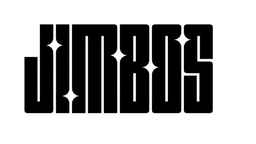How to Foam an Engine Bay the Safe Way
Want to deep-clean your engine bay without damaging anything? Here’s how to foam an engine bay the safe way — using the right products and techniques.
Why Foam an Engine Bay?
Foaming your engine bay is one of the safest and most effective ways to:
- ✅ Loosen and lift grease and grime
- ✅ Clean around tight areas without harsh scrubbing
- ✅ Minimize the risk of water intrusion into sensitive components
- ✅ Get an even clean across the entire bay
👉 But you have to do it the right way — otherwise, you risk damaging electrical components or leaving residue behind.
What You’ll Need
- The Super Soaper — safe, high-foaming cleaner
- Battery-powered foaming pump sprayer or foam cannon
- Assorted detailing brushes
- Low-pressure hose or pressure washer (carefully used)
- Ryobi blower or compressed air — for safe drying
- All Dressed Up (diluted 4:1) — for finishing and protection
Step 1: Pre-Inspection
✅ Make sure the engine is cool to the touch. ✅ Inspect for any exposed or damaged wiring. ✅ You do not need to bag off the alternator — just avoid prolonged direct spraying on sensitive components.
Step 2: Pre-Foam
In your battery-powered sprayer, mix:
- 2 ounces of The Super Soaper + water
✅ Lightly foam the entire engine bay — this starts breaking down surface grime and loosens buildup in tight areas.
Let dwell for 2–3 minutes.
Step 3: Main Foam Application
Next, using your foam cannon:
- 4 ounces of The Super Soaper + warm water in your cannon
✅ Foam the entire engine bay thoroughly, including:
- Hood underside
- Plastic covers
- Battery cover
- Firewall area
- Fender edges and seams
✅ Let the foam dwell for 5–10 minutes — don’t let it dry.
Step 4: Agitation
Use a variety of brushes to agitate stubborn areas:
- Textured plastics
- Battery hold-downs
- Rubber hoses
- Around caps and covers
👉 Light brushing paired with foam lifts most of the grime safely.
Step 5: Rinse
Rinse with low pressure:
- ✅ Use a hose or pressure washer on a wide fan setting
- ✅ Do not blast water directly into sensitive areas
- ✅ Rinse evenly to avoid leaving soap residue
Step 6: Dry
✅ Use a Ryobi blower or compressed air to blow out excess water. ✅ Focus on connectors, seams, and crevices. ✅ Allow engine to air dry fully before applying dressings.
Step 7: Dress and Protect
Apply All Dressed Up (diluted 4:1) to all plastic and rubber components:
- ✅ Leaves a clean, matte OEM finish
- ✅ Protects against future grime and UV damage
- ✅ Makes the engine bay look factory fresh
Step 8: Final Check
✅ Start the engine to ensure everything works properly. ✅ Wipe away any excess water or product. ✅ Enjoy your clean, professional-looking engine bay!
Final Thoughts
Foaming your engine bay the safe way is easy — as long as you use the right products and technique:
- ✅ The Super Soaper — for safe, thick foam cleaning
- ✅ Battery-powered sprayer or foam cannon
- ✅ Proper rinse and drying technique
- ✅ All Dressed Up — for finishing and protection
👉 Learn the full engine detailing process here: The Ultimate Guide to an Engine Detail
Foam your engine bay the right way — and keep it looking its best.




